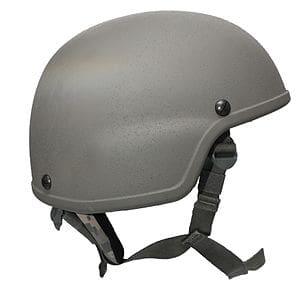Ceradyne was recently awarded a contract for their Enhanced Combat Helmet for use by the US Army and Marine Corps. One of the key ingredients to the success of their design was DSM’s Dyneema HB80 unidirectional (UD) composite. HB80 happens to be the only material that passed stringent ECH testing and is currently used in vehicle armor applications.
In a press release, Dr. James Zheng, chief scientist Soldier Protective and Individual Equipment, PEO Soldier said, “The ECH program represents a major advance in helmet technology that can deliver enhanced superior protection for our troops. Our close collaboration with leading industry partners such as Ceradyne and DSM Dyneema enabled us to utilize their valuable technological expertise and support, resulting in the new ECH helmet.”



Too bad you can’t get anyone in his organization to tell you what EXACT round it stops, at what velocity, at what angle, and how much Back Face Deformation (BFD) occurs. If this helmet only stops an obscure AK 7.62 round rarely found on the battlefield, and the BFD is so extreme it would go half way through your head, then why bother? I am troubled at the lack of any real information whenever the ECH is talked about.
Lots of fatal fragmentation AND ballistic hazards on the battlefield CAN be stopped by helmets. We could encase our craniums in unobtantium capable of stopping Dishka fire from near point blank range but the point of weakness will always be the neck that supports the head in the helmet.
I loooved the low weight and bulk of my Dyneema vest–until they pulled it back in after the contact-shot performance tests. I’m ASS-u-me-ing that a rigid structure such as a helmet will capitalize on Dyneema’s ballistic performance and weight advantage while having a an outer shell more amenable to the abuse these things take even when used PROPERLY.
I thought ALL aramid helmets have a protective outer shell.
No one expects a kevlar helmet to have the same flexibility of a kevlar vest for a reason.
No, they are set up under pressure in a resin.
All and every helmet is tested to NIJ IIIA. That’s 9mm & .45. Some are only tested to STANAG 2920 depending on the requests of the end-user.
It is possible to reach NIJ IV and this may have been made possible with the use of Dyneema. I guess we will just have to await the test results.
We have been working on Dyneema helmets for some time but had issues with the lamination process as it is a great deal different to using Kevlar and other such aramids. Historically Dyneema helmets tended to split apart when hit. I just hope that they managed to fix this issue!